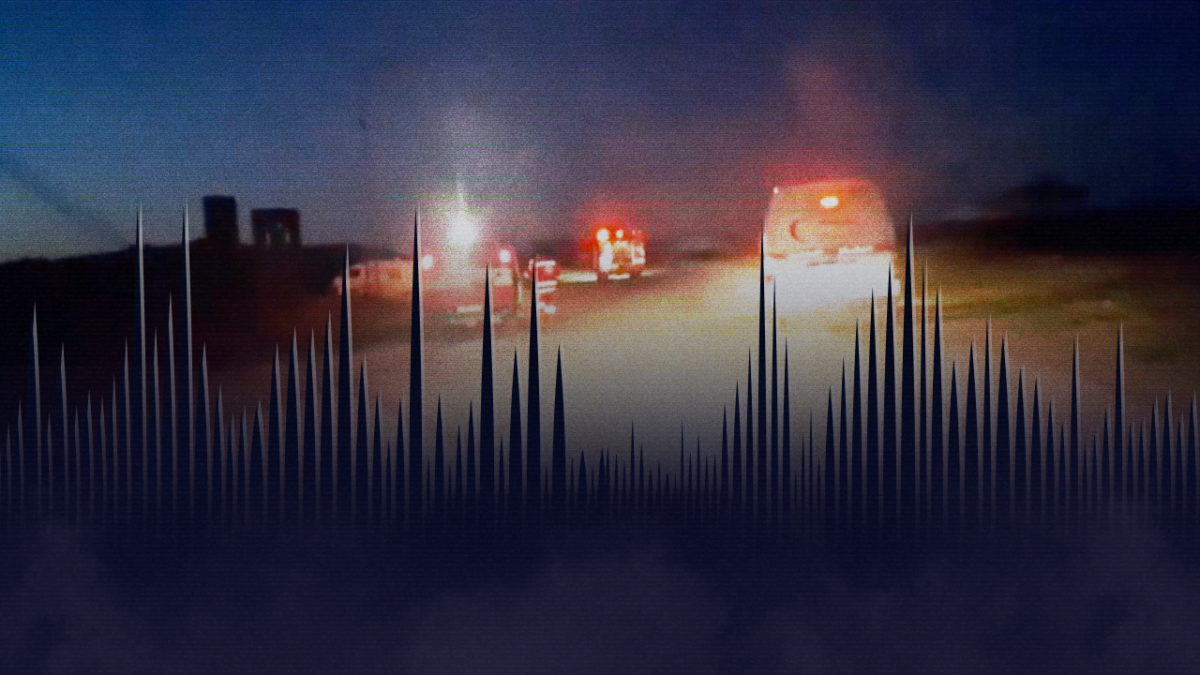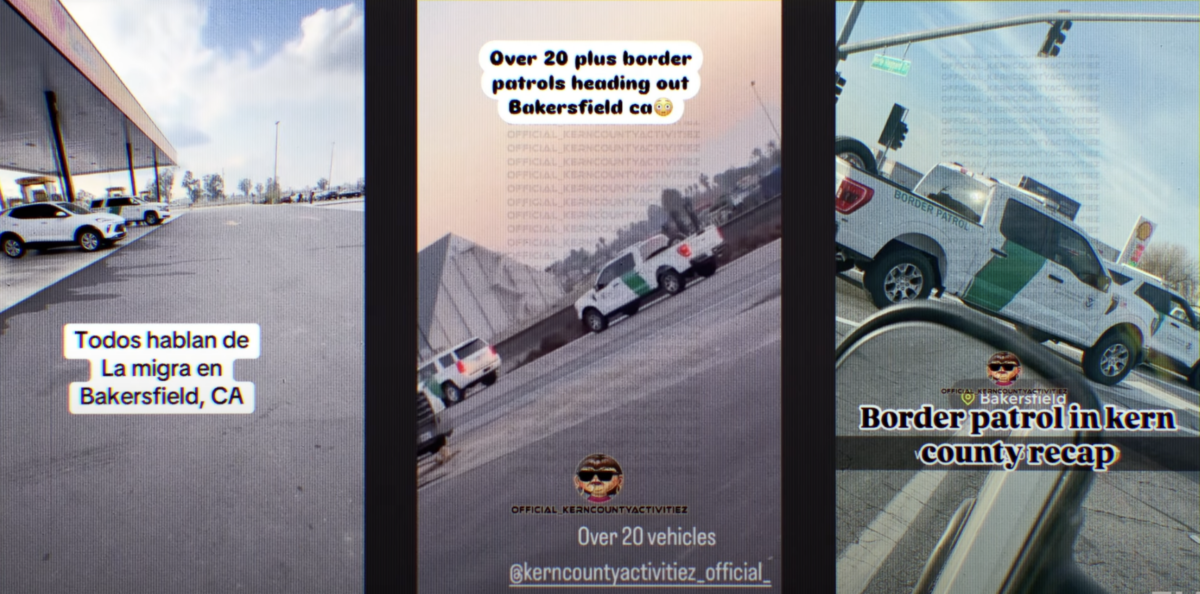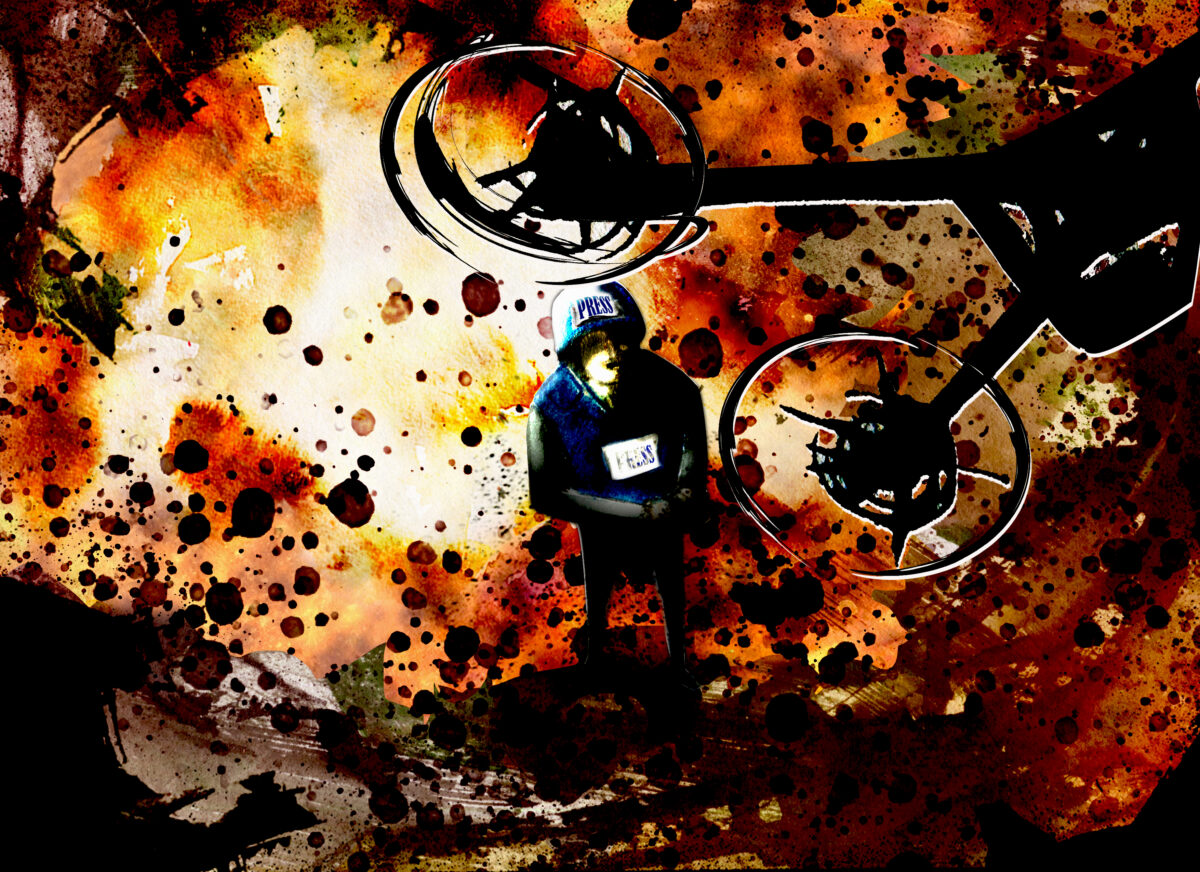The Five Deaths in the Murder of Miroslava Breach
Two women who were taking a selfie at an airstrip in Chihuahua highlands died, it seemed, accidentally; a pilot who flew o the Tarahumara highlands and a retired martial arts teacher were murdered in 2017. Before the end of that year, a mysterious man was shot to death in the north of the country. All of these deaths were connected to the murder of journalist Miroslava Breach, which took place on March 23 2017 in Chihuahua, Mexico. The Colectivo 23 de Marzo, which is made up of Mexican journalists, collaborated with Forbidden Stories, Bellingcat and the Centro Latinoamericano de Investigaciones Periodísticas (CLIP) to investigate the truths of these five deaths linked to the journalist’s murder. This report highlights why investigating these deaths would have shed light on the murder of the respected La Jornada reporter.
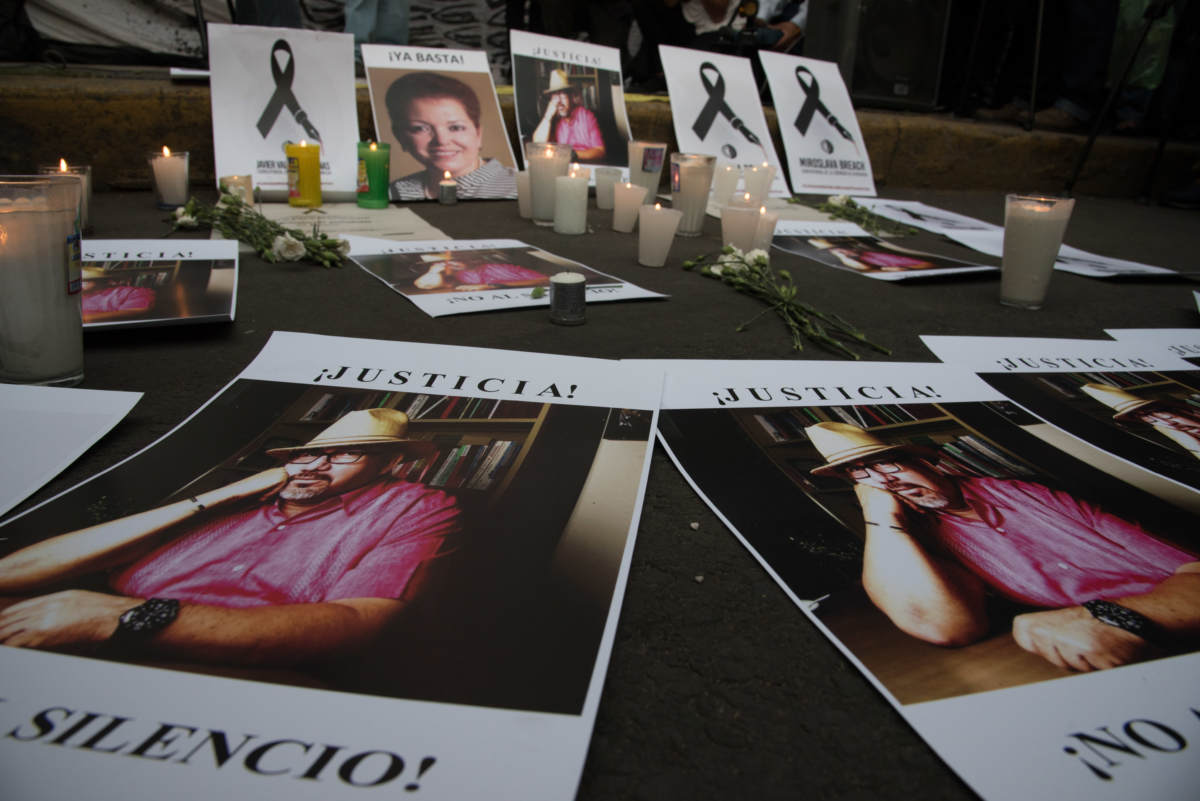
Following the murder of Miroslava Breach, five other deaths have been linked to her case. However, the Chihuahua state authorities have not investigated these fully. Source: Colectivo 23 de Marzo
By the Colectivo 23 de Marzo and allies
Two days after the murder of journalist Miroslava Breach in the city of Chihuahua, in northern Mexico, two young women who were watching a horse race near the airstrip in Chínipas, Miroslava’s hometown in the Tarahumara highlands, were killed when they were struck by an airplane, the authorities claim. According to press reports, two of the three persons who killed Miroslava were on board that aircraft. Little is known about the accident: armed men took the cellphones of the witnesses to delete evidence; local police denied that the accident took place when asked by journalists, and the office in charge of aviation in the country did not investigate the event. The horse race was part of the birthday celebrations of drug trafficker Alfredo Salazar Ramírez, who has been in prison since 2012. He is also the heir of the criminal group known as Los Salazar, Los Salazares or the Nueva Gente Salazar, which Miroslava had exposed in her journalistic work.
It is not clear who piloted the airplane that landed in Chínipas that March 25, 2017 afternoon, but Jorge David Coughanour, a pilot who owned an air taxi company that provided services to that mountainous region, was murdered 16 days later when he left a restaurant in Chihuahua. According to the case file, his clients included Javier Corral, the candidate who would soon become governor of Chihuahua state. The state police immediately linked his death to Miroslava’s murder.
The pilot’s death was followed by another one less than a week later: that of Gabriel Ochoa Cárdenas, a retired martial arts teacher and reclusive man, who was shot six times in front of the chickens he looked after. Beside his body lay a distinctive collector’s pistol and a cardboard sign that said that he was the killer of the prominent journalist of La Jornada newspaper and columnist of El Norte de Ciudad Juarez. The state government fed theories blaming him for the killing, until inconsistencies made it clear that he was innocent.
The Chihuhua state Prosecutor’s office and the federal agency that specializes in crimes against journalists have had Juan Carlos Moreno Ochoa (a.k.a. El Larry) in detention since December 2017, accused of working for Los Salazar in Chínipas. Raised at Ochoa’s home was Jaciel Vega Villa, who is under the protection of Chínipas’ most powerful family, is still on the run. It is alleged that they were travelling in the airplane that killed the two young women. Both prosecutors, state and federal, accuse them of being behind Miroslava’s murder.
The third suspect, according to the official version of the story, was a hitman named Ramón Andrés Zabala Corral, who appeared in the highlands of Sonora that same December, dead from a gunshot to the chest.
No one has been detained so far in relation to these five deaths connected to Miroslava’s murder. Neither the state’s prosecutor’s office nor the Specialized Division on Crimes Against the Freedom of Expression (FEADLE) at the Federal Prosecutor General of the Republic, which took over the case one year after Breach’s death and continued the investigation, seem to have put enough effort into clarifying these deaths, even though they could provide leads about those responsible for the murder of a prominent journalist who denounced links between drug trafficking and politics.
The Colectivo 23 de Marzo, comprising a group of Mexican and foreign journalists and accompanied by several international journalism organizations, investigated these deaths and has tried to find responses to the questions that those in charge of the case left unanswered.
These are our findings.
The Two Friends
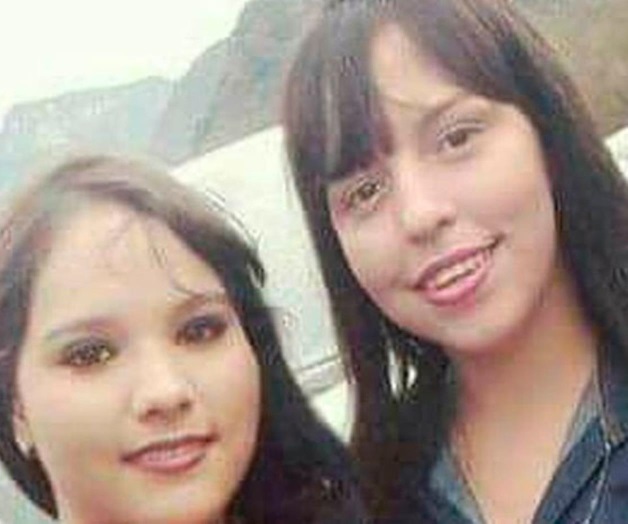
According to local media, Nitzia Mendoza and Yoselin Morquecho died after they were struck by an airplane that was landing in Chínipas, Chihuahua, during a horse race. Image from Facebook
Each March, on the illegal airstrip of Chínipas, a remote town in the Chihuahua highlands on the border with Sonora state, norteña-genre musicians land to celebrate the birthday of Alfredo Salazar Ramírez. This man, better known as El Muñeco, is a licensed pilot requested in extradition by the US to face drug trafficking charges in a Texas court. He is the son of Adán Salazar Ramírez, or ‘Don Adán’, a former associate of the Sinaloa Cartel who has been imprisoned since 2011 and patriarch of a violent clan that—as Miroslava Breach reported—controls local politics and the police through his brother José Crispín, who now runs the business.
The authorities, who have identified them as very violent, accuse them of murdering several social activists and being responsible for the disappearance of a journalist in Sonora, as well as other murders, forced displacements, migrant trafficking and other violent episodes in Sonora and Chihuahua.
On Saturday, March 25, 2017, two days after Miroslava was murdered in Chihuahua, Alfredo celebrated his birthday as he had in previous years: with a horse race on the Chínipas airstrip. There was also going to be a dance that night.
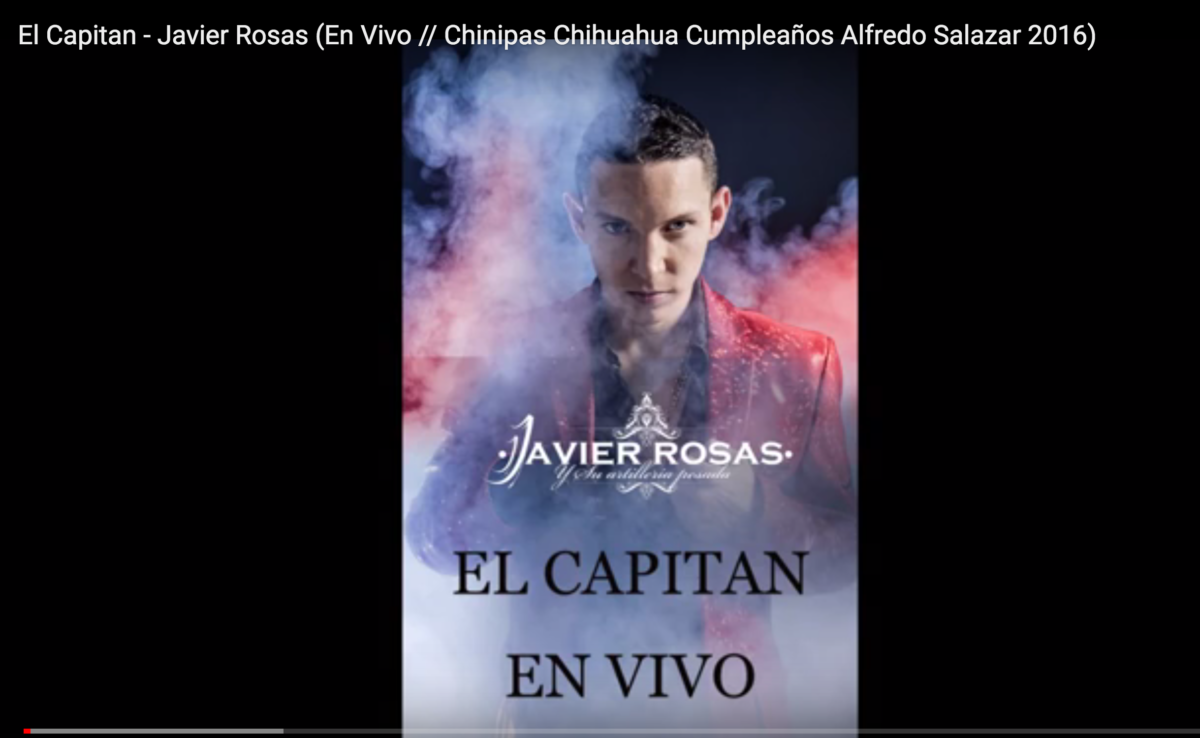
It is said that each year, folk singers arrive in Chínipas to celebrate the birthday of Alfredo Salazar Ramírez, who has been imprisoned at El Altiplano since 2012. Source: YouTube, Javier Rosas
18-year-old Nitzia Mendoza and her friend Yoselín Morquecho, 17, were watching the race from the back of a pickup truck that was parked beside the airstrip. It was just past 2:00 PM. As they were taking pictures, according to the press, an airplane struck them on the head and killed them instantly. So outlandish was the accident that the world soon came to know it: “A selfie cost them their lives!” some news outlets headlined, as if they had been responsible for their own deaths. Several outlets reported that the pair had been decapitated by the strike.
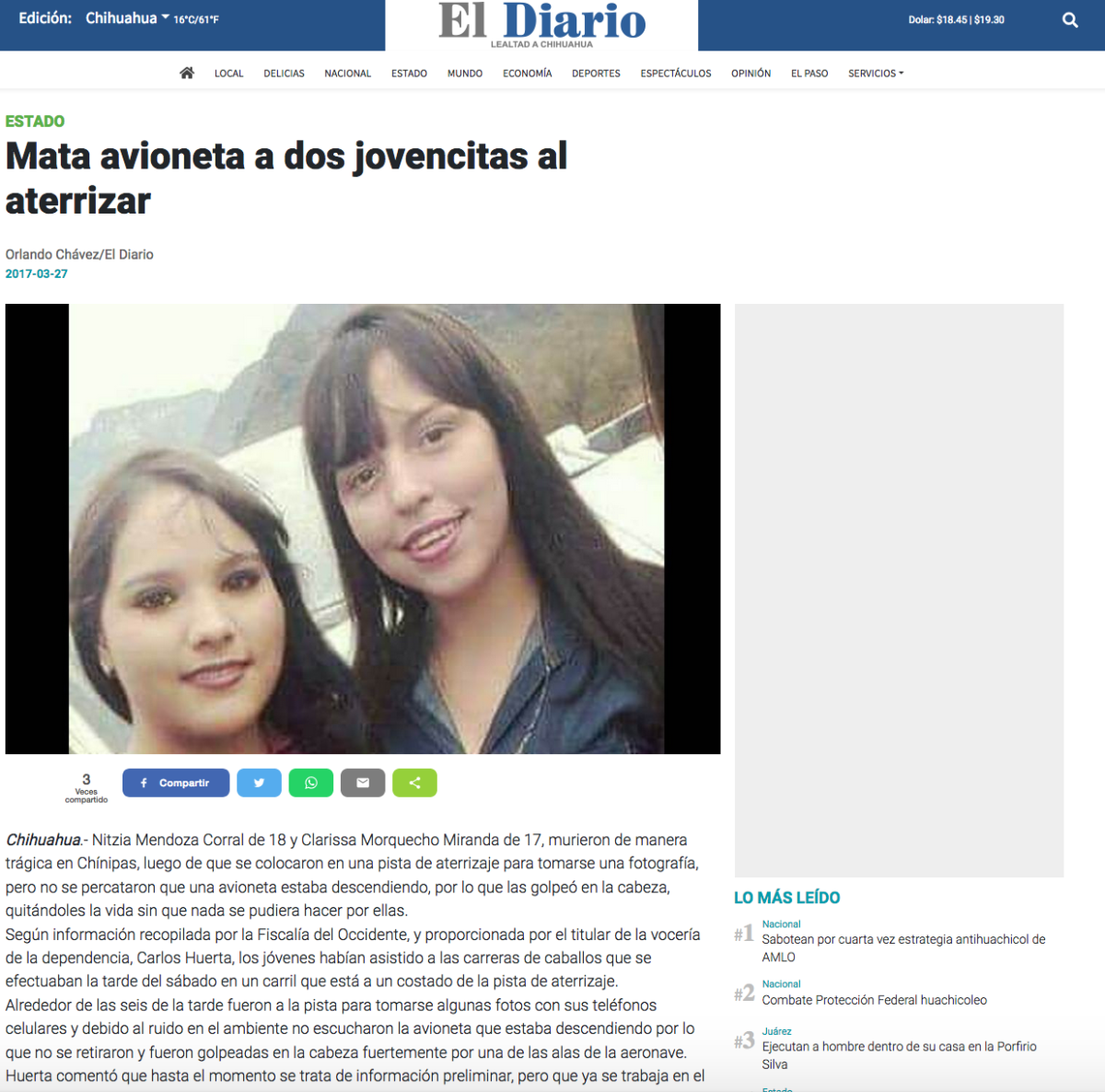
Even though news of the accident involving the two teenagers in Chínipas made international headlines, their deaths were not investigated by the state prosecutor’s office nor by federal authorities. Source: El Diario de Chihuahua
When local media looked for municipal authorities to inquire about the tragedy, none responded. El Diario called the Chínipas police, which denied that the accident had even taken place. At the time, the local police was under the command of Martín Medina Ramírez, whom according to Miroslava’s reporting was a relative of the Salazars and responsible for several crimes. The attempt to silence the event was evident.
This investigative team had access to photographs of the victims’ bodies, which show their bloodied clothes and faces at the time of their autopsy. The images show that the injuries that caused their deaths were barely two to five centimeters long; small and precise. It is difficult to imagine how a landing airplane, traveling still at speeds between 80 to 100 kilometers per hour and striking them with a wing or propeller, would leave only these small injuries and bruises.
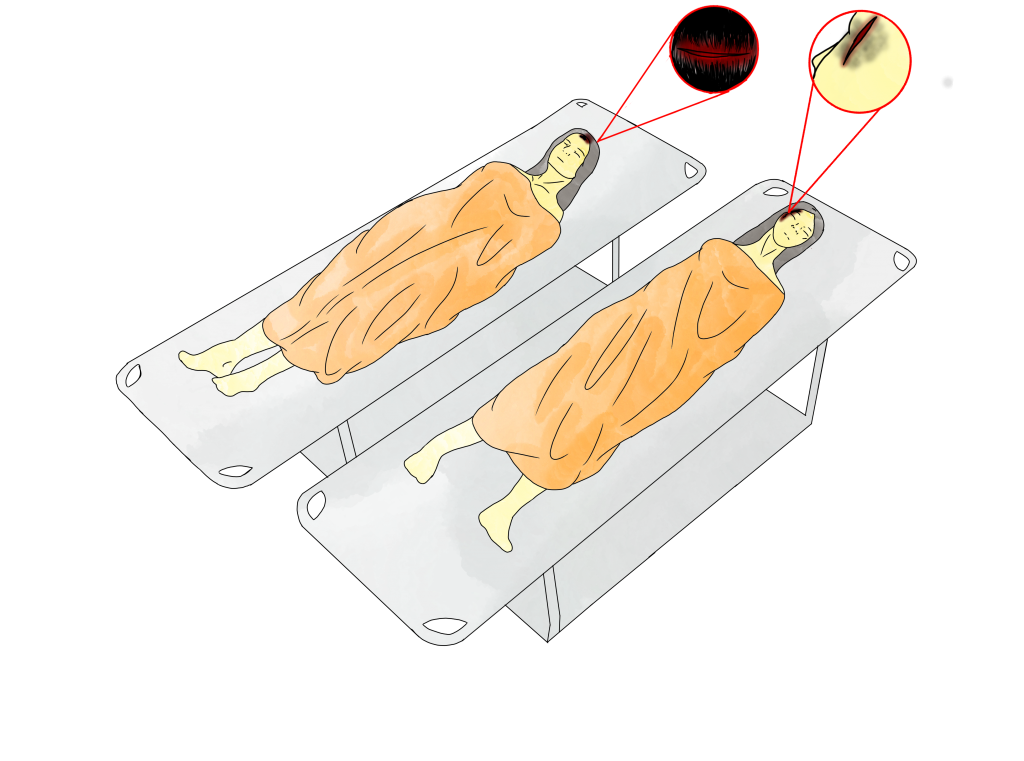
Neither their relatives, nor their friends nor the authorities have wanted to comment on the deaths of Nitzia Mendoza and Yoselin Morquecho. Source: Colectivo 23 de Marzo
A witness to the event who, for security reasons asked for anonymity, told this group of journalists that the tragedy occurred because there were three or four airplanes landing that afternoon, not one. According to this witness, a hasty or careless pilot landed on the other end of the airstrip where people were congregating.
“These are parties that criminals put together. So, it’s a small airstrip. It’s an airstrip that’s about one kilometer long, if that. On the right side is where the races happen. Between this spot and the airstrip, cars park; and on the other side they do so as well [and] there’s a road that’s about four or maybe five meters (…) there is a field there were they were landing, because there were several planes landing at the time. People were arriving [to the airstrip], but this airplane landed the opposite way and came in at full speed”, said the person who asked to remain anonymous due to fear of reprisal.
This source said that Yoselin and Nitzia did not see the airplane landing and were thrown to the ground. “They lifted the girls up, they took them to the clinic and the pilot automatically, immediately left. It was that quick”.
“Was it an air taxi”, we asked him.
“No, I think that most of the airplanes that were landing were private”, he said.
“How many landed?”
“There were two, three, four airplanes. One would arrive and it would leave, and another would be waiting for people there”.
On March 27, El Diario de Chihuahua revealed that witnesses to the event were forced to delete any videos that they had recorded at the scene. The newspaper claims the following:
“This past Saturday, on the day of the accident, residents of Chínipas said that criminals surrounded the airstrip and forced everyone to delete the images that they had recorded on their cellphones and cameras, and also threatened anyone who spoke about what had happened with death. According to our sources, [these criminals] even took positions at the roads leading out of Chínipas after the accident that killed the two women in order to search the cellphones of people leaving the area.”
A witness who asked to remain anonymous told our team the following:
“After leaving the airstrip, there were people there who were searching all of the cellphones (…) they cleaned everything off the cellphones. They erased everything right there. When they had deleted everything off the cellphones, then people left the area. No one left before that.” This same witness told us that in Chínipas “we cannot speak up” because “the criminals are in charge”.
Bellingcat, the British investigative media outlet which assisted with this investigation, confirmed that there was an “absence of open source information in the form of images and videos recorded by people at the site” on March 25. This, in contrast with the several public videos from similar celebrations of previous years.
Our team obtained different versions about who was on these airplanes.
One report claims that one of the airplanes was there to pick up a medical patient in serious condition with the last name García to take him to Sonora to be operated for appendicitis. Another version claims that two people got off the airplane. Yet another version says that one of the passengers of the airplane was a famous narcocorrido singer, who was the son of one of Joaquin “El Chapo” Guzman’s associates. A resident of Chínipas told our team that the airplane was the same “that always brings bands” to the town. An intelligence source told our team that one of the passengers who got off the airplane was armed and that the 42nd military regiment in Parral, Chihuahua, issued a report to that effect. This team filed several freedom of information requests (one of them presented through a freedom of the press organisation) but the national Defense Ministry denied the existence of such a document.
An individual connected to the State Prosecutor’s office claims that an air taxi pilot suspected of being responsible for the two deaths was asked to provide a statement in relation to the incident, and that this pilot said that he had taken off from Hermosillo, Sonora, picking up a person in distress in Chínipas, and then taking off for Huatabampo, Sonora.
In the week after the event, the State Prosecutor’s office said that it did not have the registration number of the airplane that was involved in the incident. The Communication and Transport Secretariat (SCT) claimed that the Chínipas airstrip was illegal.
The reason for this official silence on the case would become known nine months later.
On December 25 2017, Chihuahua state governor Javier Corral published the following information in a tweet: “In an operation carried out by the Federal Police as a result of the investigations by the state prosecutor’s office and with the strategic collaboration of the National Intelligence Centre, we’ve been able to capture today Juan Carlos Moreno Ochoa [aka Larry], the mastermind of the murder of the journalist Miroslava Breach Valducea.”
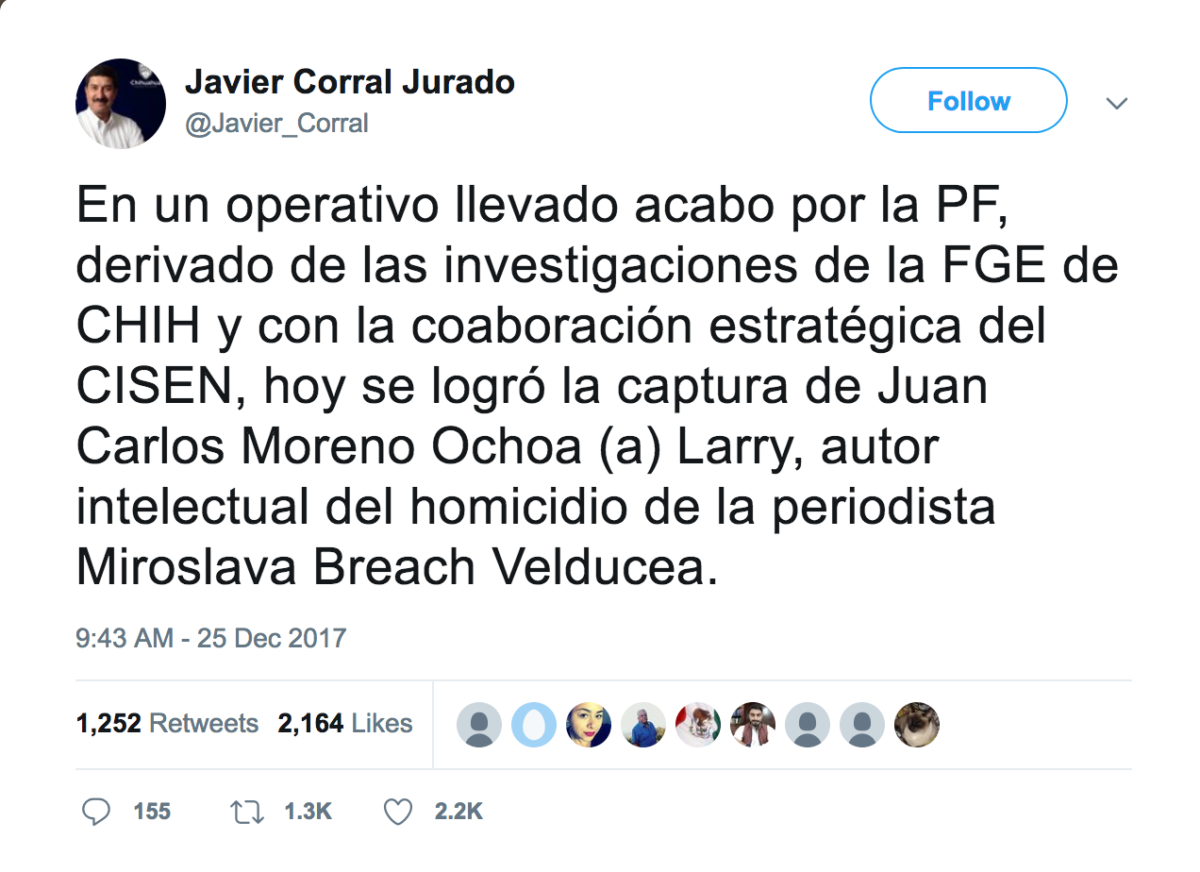
Governor Javier Corral announced El Larry’s capture on December 25, 2017. Local media reported that after the murder, he fled to Chinipas on the airplane that struck and killed Nitzia Mendoza and Yoselin Morquecho. Source: Twitter, @Javier_Corral
That day, El Diario de Chihuahua published a story that linked the incident to Miroslava’s murder. In the article (titled “The airplane that killed the two young women belonged to El Larry) the newspaper claimed that he “was returning to [Chínipas] after supervising the journalist’s murder”. The article, which does not identify sources, claims the following:
“No one wanted to talk about the incident in Chínipas because of how much they fear Los Salazar, who control drug trafficking activities in the entire region and who have influence over politics and the police authorities”.
The testimonies from two individuals taken by the prosecutor’s office also indicate that on March 25, sometime before 2:00 PM, two of the three people linked to Miroslava’s murder traveled to Chínipas.
This version came to light during the preliminary hearing of Juan Carlos Moreno Ochoa (a.k.a. El Larry), who is accused of being the hitmen’s leader and the mastermind behind Miroslava’s killing, flying that day from the Chihuahua International Airport to the Sierra region. According to the State Prosecutor’s office, Moreno Ochoa was accompanied by Wilberth Jaciel Vega Villa, who had transported triggerman Zabala on his car to the journalist’s home on the day of the murder. There was apparently no space for the hitman on the plane.
A female police officer who sheltered the men after the murder and whose identity was protected under the codename Rubi, claimed that her uncle El Larry and Vega Villa left her house at 8:00 AM on March 25 because “their airplane was ready”. Since there was no room aboard the airplane for Zabala, he returned to her home to spend one more night. A cherry-colored SUV transported them to and from the airport. El Larry and Zabala were always armed.
Chiquilin, the taxi driver who drove them and who received the moniker so as to protect his identity, disagrees with Rubi’s testimony. He claims that it was on March 24 at 7:00 AM that he left El Larry in the airport’s air taxi section, and that he heard him speaking to someone on the phone and saying that he was “almost there”.
Moreover, a friend of Vega Villa showed prosecutors a picture that he sent to a group chat on March 25 at 2:49 PM in which an airplane is visible in the background. An hour and a half later, in another picture, Vega Villa appears in the back seat of a vehicle entering a town, just where a road sign reads “Chínipas”.
The testimony of another witness dubbed Estrella, read during Moreno Ochoa’s preliminary hearing, established the following:
“On Saturday March 25 [I] realized that Jaciel had arrived in Chínipas aboard an airplane along with his bother, which is what his cousin said, and that he had arrived at something like two or three in the afternoon, and his cousin also told her that the airplane had struck two girls and that they had died.”
A week after El Larry’s arrest, journalist Hector de Mauleón published an op-ed column in El Universal stating that he had been “hiding for several months” in the dorms of the Palmarejo gold and silver mine, operated by an American company called Coeur Mining and located 12 kilometers away from Chínipas. “Moreover, [El Larry] had at his disposal an institutional network of protection on behalf of the state and municipal police”, De Mauleón wrote.
Several partners of this collective tried to communicate with the mining company’s company offices in Chicago and in México to corroborate the serious accusations, but it was not possible to obtain an answer.
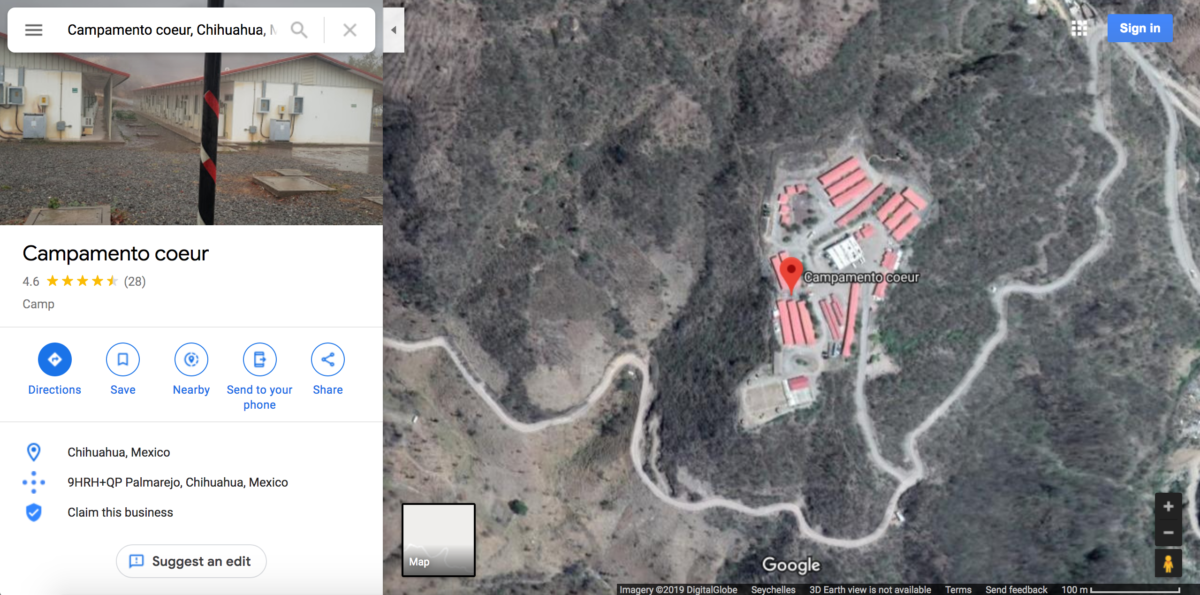
El Universal published an article claiming that El Larry hid in the Palmajero mine, which is operated by Coeur Mining. The company did not respond to our requests for an interview. Images from Google Maps
Our team was able to confirm that Palmarejo has an airstrip that measures approximately 570 meters, which is enough to service Cessna aircraft, and that the mine’s dorms are located some five kilometers from this airstrip.
Even though it is important to know how the killers escaped Chihuahua in order to determine what resources and protection they had at their disposal, state and federal case files examined as part of this investigation do not contain any evidence that the public accusation involving Coeur Mining was investigated, nor that the March flight records of the Roberto Fierro Villalobos International Airport in Chihuahua were properly reviewed for that weekend. No private aircraft pilots or personnel that operate at the airport were questioned, according to case files. In the state level dossier, the flight logs are practically illegible.
While the story of the “selfie” deaths spread throughout the world, the SCT did not record the incident among those occurring in 2017 despite its mandate to do so, according to our review of available records. When formally asked about the accident (file 0000900095119), the federal entity said: “The General Directorate of Civil Aviation does not have any record or document that suggests that any aviation accident or incident took place”.
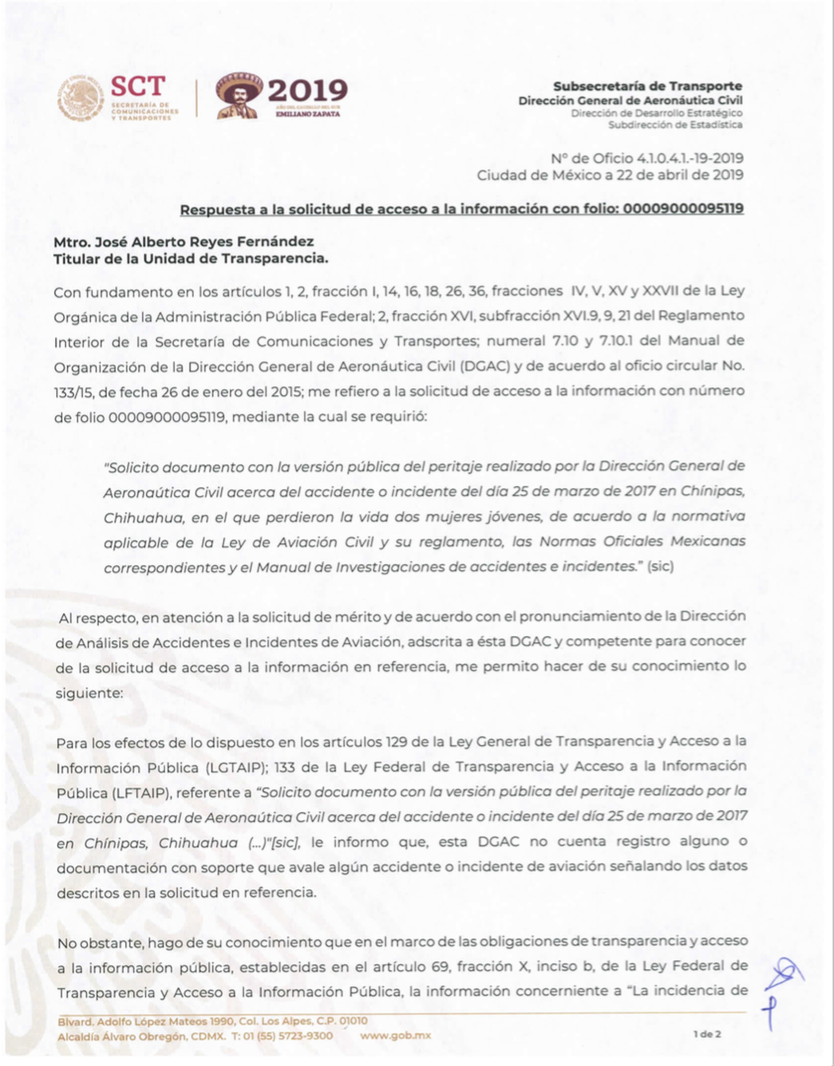
The Communication and Transport Secretariat (SCT) said that it did have a record of the accident, even though it made the news across the world given the unusual manner in which the teenagers lost their lives. Source: Colectivo 23 de Marzo
Our team asked sources not only in Chínipas but in Chihuahua and Sonora states about the deaths of Nitzia and Yoselin. Some of them hung up the phone when we explained our investigation, or shouted in panic, saying that they would be killed if they spoke up. Five of them told us, independently, that Los Salazar monitor cellphones and even social network communications happening in the region under their control. We were often reminded of a fact that seems like a legend: that Los Salazar have lions to which they feed their enemies. In 2005, a zoo containing “lions and tigers” was found in a farm in Sonora, which remains the family’s property to this day.
Not one of the sources that we consulted differed in this characterisation of Chínipas: that it is a town under the control of drug traffickers, lost in the highlands, difficult to access by land, that the communications in the town are being monitored, and that it is located on the path to the United States and connected to the outside world by the airstrips in the town, in the nearby municipality of Temoris and in the mine.
Members of our team wanted to visit Chínipas to conduct interviews with local authorities, relatives of the men accused of Miroslava’s murder, individuals named in news reports and with witnesses to the deaths of Nitzia and Yoselin. The prosecutor’s office, as far as the case files show, did not conduct any of these interviews, even though they were essential to the investigation. Our sources advised us to stay away from the town. One of them told us, “You don’t know how things are there”. Another said: “Los Salazar can bring down airplanes. You could get into Chínipas by air or land, but you wouldn’t leave.”
Our collective—via a freedom of expression organisation—requested an interview with state prosecutor César Augusto Peniche and sent a questionnaire asking why no investigators were sent to Chínipas since so many threads in the case led directly to the Sierra region in which the town is located, including the allegations that El Larry hid there and that Vega Villa is there now. Peniche never responded to the request.
We asked Ricardo Sánchez Pérez del Pozo, head of the Specialized Division on Crimes Against the Freedom of Expression (FEADLE) at the Federal Prosecutor General’s Office, these same questions. He said:
“I cannot reveal that information. What I can say is that the federal authorities are working in a coordinated fashion in order to execute the arrest warrant and are doing the necessary work related to this case”.
The Pilot
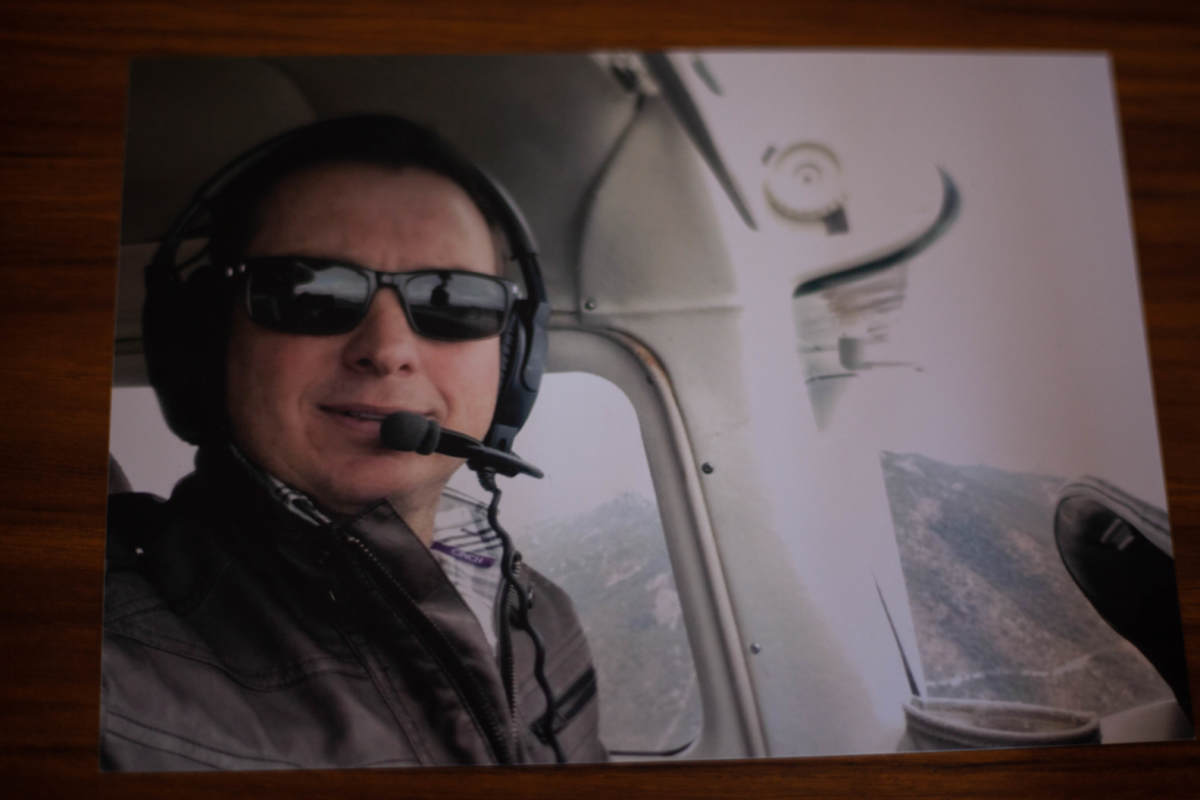
Jorge David Coughanour, a pilot, was murdered on April 10 2017. Media reports named him as the pilot to Los Salazar. His father denied this. His murder was not investigated, and neither were the leaks to the media. From: Colectivo 23 de Marzo
What made Jorge David Coughanour Buckenhofer endearing was not only the fact that he sometimes used his airplane as an air-ambulance, but also that he always responded to distress calls from places where no other pilots dared to land. His ability to operate out of small airstrips resulted in his creation of an air taxi company serving the highlands at the age of 30, which he based out of the Chihuahua airport. That company is called AeroCoconor and has at its disposal six turboprop aircrafts. He got the name for the company from his paternal grandfather, a miner and air combat veteran from Idaho who was known as “Mr. Coconor”, given the difficulty that many had with pronouncing the Coughanour last name.
(Jorge David Coughanour founded AeroCoconor, which serviced the Tarahumara highlands. Among his clients were policitians. Source: Facebook Pilotos Sierreros https://de-de.facebook.com/pilotossierrerosG16/videos/piloto-jorge-david-coughanour-municipio-de-uruachi-chihuahua/1371772759546391/)
Coughanour began down the path of a commercial pilot at the age of 18, after he came to an agreement with his parents during high school that he would study to become a pilot after graduation. Coughanour would become the pilot of a former governor of Sonora state when his family would go to Tucson, Arizona for shopping. He also flew the PRI governor Cesar Duarte and then PAN’s Javier Corral when they were on their campaigns. Coughanour flew several highland mayors, National Geographic photographers, miners and federal employees.
He also flew on the morning of April 10, 2017, the day that he was murdered. That last day was ordinary. He visited his mother shortly after noon. He went for a walk with his niece, returned home and then went out for dinner with a friend. At 8:00 PM, they left the restaurant together. He opened the door for his friend to the 2017 Mercedes Benz that he had purchased just six weeks earlier, and when he entered the driver’s seat and closed the door, a vehicle—perhaps a red Nissan Tiida—pulled up beside the vehicle. A person exited the car and shot Coughanour at least six times. The bullets left a hole the size of a fist in the driver’s side window. They were professional, accurate shots.
According to the case file, Police Unit 328 agent Michelle Guadalupe Barraza Espinosa, an investigator from the homicide squad, was the first to arrive at the crime scene. Interestingly, officer Barraza had also taken part in Miroslava’s murder investigation: she was one of the two officers who found the home of the Vega Villa family, who raised El Larry. In the home they found they found evidence incriminating him and his half-brother, Jaciel Vega Villa, whose whereabouts are still unknown.
“I heard a really loud explosion. I didn’t know what had happened. I didn’t feel like I was injured. I didn’t turn to look at Jorge. I didn’t think that he had been hurt. I could just hear him breathing. I stuck my head out the window and yelled for help (…) [and] I lost consciousness”, Coughanour’s friend said, speaking to police from the hospital several days after the pilot’s murder.
In order to try to find Coughanour’s killer, officer Barraza interviewed two witnesses: a neighbour and a restaurant patron. She asked for the CCTV footage from the camera located outside the restaurant, but the owner refused.
Officer Barraza and her colleagues closed off the street and took pictures of the crime scene. In one of these images, gloved hands are seen holding Coughanour’s identification. An ambulance took his injured friend to the hospital.
Case file 19-2017-0009981 does not contain any indication that CCTV footage from cameras near the site of the killing was obtained, nor were any details about the vehicle in which the killer fled. Police did not interview any of Coughanour’s relatives. His body was left in the morgue all night, listed as “unknown”.
***
A person with close ties to Coughanour whose name we are withholding for security reasons told our team that they received a phone call at 7:00 AM on April 11, 2017 from AeroCoconor. There were passengers waiting for Coughanour, who was nowhere to be found. He was not answering his phone. That was when his family and friends began to desperately search for him.
A close friend recognized the Mercedes in a newspaper article. This friend then went to his parents’ home, where they collapsed at hearing the news. Despite having identified their son almost twelve hours earlier, the authorities did not inform his parents of their son’s death. In contrast, when someone called Coughanour’s friend’s cellphone, officer Barraza answered and told the caller that she had been injured and which hospital she had been taken to. Coughanour’s cellphone rang repeatedly throughout the morning of April 11, but when the authorities handed it over to his family, all the calls and messages from that day had been deleted, according to interviews with people close to his family.
Coughanour’s father, Jorge Guillermo Coughanour Miller, sought a meeting with governor Javier Corral. Instead, he was granted one with state prosecutor César Augusto Peniche. “He told me that he knew my son, that he was a very good pilot, and that his case was very important for the government, and that they would carry on with the investigation. It wasn’t true”, said Coughanour Miller when we interviewed him in his office. Its walls are decorated with pictures of his only son.
Even though Coughanour flew the current governor during his campaign, as two witnesses testified in the case file and several acquaintances and one public official confirmed to us, Corral has never admitted this relationship publicly, and did not send his condolences to Coughanour’s family.
On April 12, just one day after news of the murder had been published, El Diario de Chihuahua published leaked information under the title “Miroslava’s Possible Murder Weapon Found”. According to the article, the state prosecutor’s office discovered that the pistol used to kill Miroslava was the same that had been used to kill Coughanour. According to the authorities, the weapon in both killings was a .38 super calibre. Five days later, the director of the state police, Óscar Aparicio, confirmed the leaked information in a press conference. Aparicio said that the bullet casings found in both crime scenes coincided.
A report (part of case file 19-2017-000981) compiled before this press conference as part of the Coughanour murder investigation contradicts this assertion. Dated April 11 2017—just one day after the murder—a state forensic ballistic expert wrote in the report: “Today, we have verified that the ballistic fingerprint 0807001002682017 in the IBIS system, and as of this moment it has not provided any matches with any of the elements located in the database”. The bullets that killed Coughanour did not match those that killed Miroslava.
A source with access to the case file told our team that investigation conducted on the bullet casings were in fact of the same calibre, but that they had not been fired from the same weapon. The state prosecutor’s office never corrected the record on this. The state prosecutor also did not respond to an interview requested by a freedom of expression organisation for this project.
On May 4, almost a month after his son’s murder, Mr. Coughanour went to the state prosecutor’s office to demand that they take his statement. No one had sought him or the victim’s aviation colleagues. Sources close to the investigation said that not every statement and piece of evidence given to the prosecutors made it formally into the investigation.
Reading Coughanour’s brief case file, one gets the impression that the prosecutors were more interested in investigating the victim than finding his killers. The state prosecutors, for example, asked for the victim’s tax filings to the Tax Management System (TMS) and his cellphone data, inquired about his romantic life, and requested the receipt for the Mercedes Benz that he had bought weeks earlier. Neither of the two interviews conducted in the minutes after the murder fill two pages.
In the case file, there is a note from the state prosecutor’s office that contains instructions to find out more information about the pilot’s personal life, who his clients in the highlands were, and whether he may have been pressured to transport drugs.
***
The last page of the case file at the Chihuhaua state prosecutor’s office is a photocopy of flight logs from AeroTepeyac, the legal name of AeroCoconor, conducted between March 18 and 27, 2017. Those days, the company flew to Chihuahua (CUU), Chauisori in the Ocampo municipality of Chihuahua state (CHR), and the Tachari airstrip in the Arivechi municipality of Sonora state (TAR). There were no flights to Chínipas.
Even so, on December 25, 2017—the same day that governor Corral announced the capture of El Larry—El Heraldo de Chihuahua published an article on its website (and in print the next day) which, without citing a single source, falsely claimed that Coughanour was the pilot who had helped Miroslava’s killers escape. The article says:
“A pilot named Jorge David Coughanour Buckenhofer was murdered on April 10 while leaving a restaurant (…) he was the one who was piloting the airplane that carried to Chínipas Juan Carlos Moreno Ochoa, alias ‘El Larry’, after the murder of Miroslava Breach Valducea, and while landing it struck and killed two young women.”
The rest of the article claims that Coughanour was “a trusted pilot of Los Salazar”, that he flew them around the highlands along the border between Chihuahua and Sonora, and that “it was his work for Los Salazar, rather than the simple transport of passengers, that made his business successful.”
Two weeks after the publication of that article, on January 5 2018, El Heraldo de Chihuahua published an open letter from Mr. Coughanour titled “Refuting the slander against the murdered AeroCoconor pilot” which was “an open letter [from] the pilot’s father refuting statements from the state prosecutor’s office”. The letter reads:
“I categorically deny what was written by Mr. Varela. I have deep respect for the freedom of the press and of expression, but no one has the right to write or publish slander that attacks the reputation of a person. This article also claims that my son Jorge was the pilot who landed in Chínipas on March 25, 2017, and that he was involved in the fatal accident that claimed the lives of two young women. This is also false. Jorge was not there during that unfortunate event, and neither was any pilot working for AeroCoconor, nor any airplane belonging to the same. Both my son and his pilots were in the city of Chihuahua. This was proven to the state prosecutor’s office already.”
In its headline, El Heraldo attributed the information published by journalist David Varela to the state prosecutor’s office. One of Miroslava’s relatives told our team that state prosecutor Peniche himself was the one who told the Breach family that the murdered pilot worked for El Larry. Neither in public nor in private has the state prosecutor’s office corrected the record on this issue, even though company records available since April 2017 show that Coughanour did not fly to Chínipas on the day of the accident, March 25, or indeed that whole week. Witnesses stressed that they saw him in Chihuahua that day, and cellphone records show that his telephone was active in the city throughout the day.
However, in the December 27 2017 hearing following El Larry’s capture, the Public Ministry read testimony from protected witnesses who claimed that following Miroslava’s murder, El Larry had said that he was “about to fly on the bird” and that he asked to be taken to an air taxi hangar.
This collective established that one of the numbers that fugitive Jaciel Vega Villa dialed was AeroCoconor’s. The call was made at 8:00 PM on March 23, lasting 88 seconds. Flight logs included in Miroslava’s and Coughanour’s case files show that the murdered pilot’s company did not fly during those days to either Chínipas or the Palmarejo airstrip.
The flight logs for the Chihuahua airport obtained for this investigation show that three pilots fly periodically to the Palmarejo airstrip (PJO). Between March 23 and 26, 2017, two companies flew planes from Chihuahua to Chínipas. However, it was not possible to ascertain which airplanes flew to Alfredo Salazar’s birthday party, because that data is considered by the government to be private information. The Hermosillo airport, in Sonora state, rejected a request for similar information using the same argument.
According to reports from the United States authorities, Adán Salazar Zamorano and his relatives use private airplanes for transport. They are considered “dangerous” by the US Drug Enforcement Administration (DEA). Their love for flying is well known. Public records show that they have owned airplanes, that they hold permits to operate airstrips, that they hold pilot’s licenses, and that they’ve even been the subjects of songs that celebrate their skills in the air.
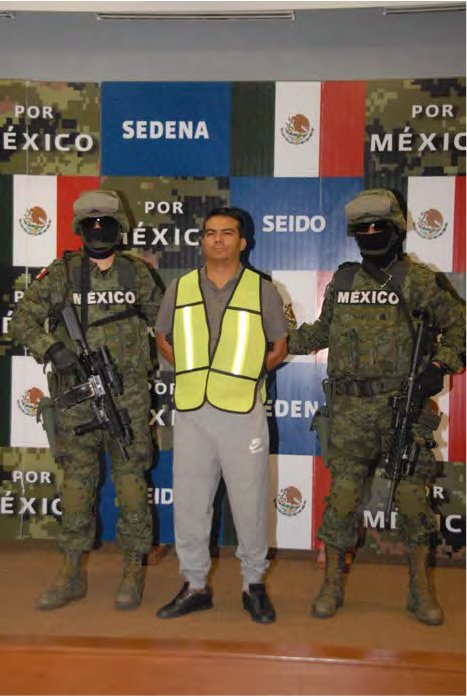
Alfredo Salazar Ramírez is the son of Adán Salazar Ramírez, the patriarch of Los Salazarez. He was accused of the murder of an activist named Nepomuceno Moreno, as well as of drug traficking, among other crimes. He was arrested in December 2012. Source: National Defense Office
In a story published on August 6, 2016, Miroslava Breach accused José Crispín Salazar’s people, Adán’s brother, of the murder and displacement of some 300 families in the town of Las Chinacas in 2015 as a result of territorial disputes. In March 2016, Miroslava’s work brought an end to the candidacy to the municipal government of Juan Salazar Ochoa, a candidate for the Partido Revolucionario Institucional (PRI) party who is a nephew of Los Salazar. His father, Joel Salazar Zamorano, had been the mayor of the Morelos municipality. His half-sister, Silvia Rubi Salazar Chávez, was an alderman in Chínipas. Despite accusations in the press, the PRI selected Salomé Ramos Salmón, Alfredo’s brother-in-law, as candidate for mayor of Chínipas last year. Alfredo is the son of Don Adán. After winning the elections, Ramos Salmón is currently the town’s mayor.
The story in El Heraldo incriminating Coughanour and containing information leaked from the state prosecutor’s office was accompanied by another written by the same journalist, titled “Miroslava’s murder was a birthday present to the Los Salazar boss”. This theory—that Moreno Ochoa acted out of his own initiative without permission from his boss, as governor Corral also suggested when describing him as “the mastermind” of Miroslava’s killing—eliminates the possibility that there might have been other persons involved.
The reporter who wrote that story and the fake information involving Coughanour with the murderers’ flight to Chínipas is no longer a journalist. He is now a Chihuahua state police officer.
The Martial Arts Teacher
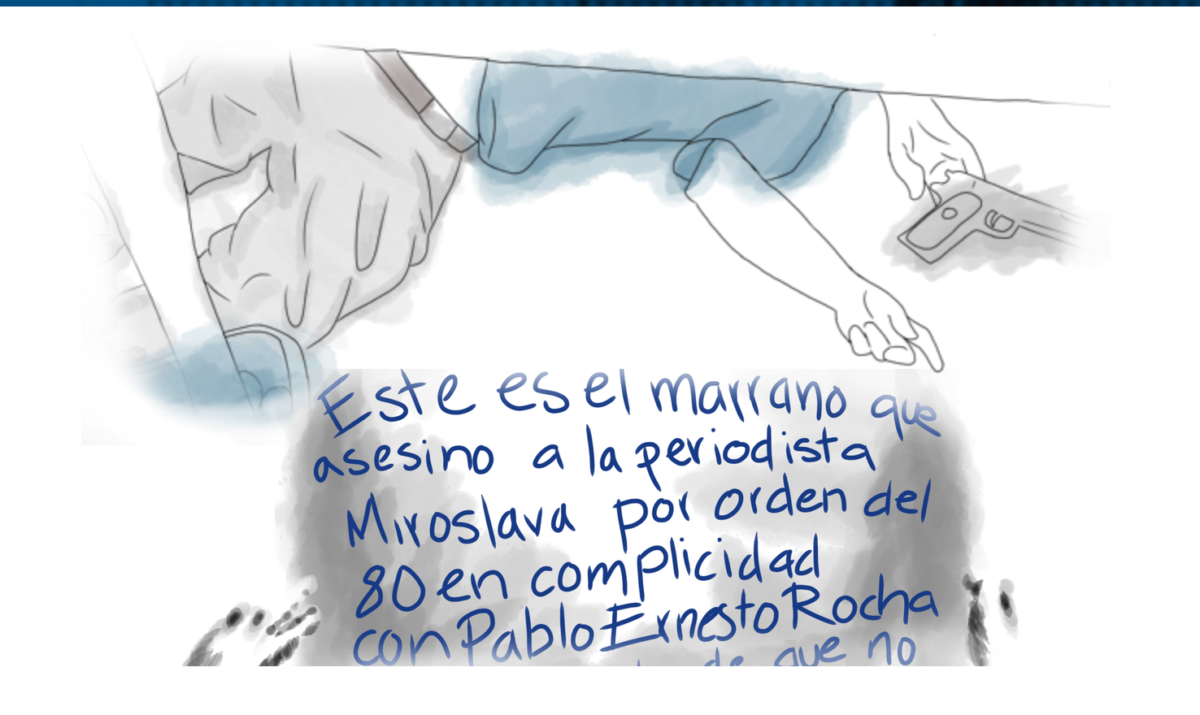
Gabriel Ochoa Cárdenas was murdered on April 17. The director of the state police, Óscar Aparicio, said that the crime was committed with the same weapon with which Miroslava was murdered. Source: Colectivo 23 de Marzo
In a press conference on the morning of April 17, 2017, Óscar Aparicio—the head of the state police force—announced that Coughanour and Miroslava had been killed with the same weapon. That afternoon, in another press conference, governor Corral revealed that the state prosecutor’s office had identified the persons who had participated in Miroslava’s murder. “We practically have all of the elements needed to go arrest these people, and we are forging a process and a chain of custody with the most scientific, technical and judicial rigour”, the governor from the PAN party announced.
The next day, Gabriel Ochoa Cárdenas, a retired martial arts teacher and psychologist known by his neighbours as El Profe, was shot to death in front of his chicken coop in the Junta de los Rios neighbourhood of Chihuahua. In his hand the police found a peculiar Colt calibre .38 super, of which only 200 were made. It was a special edition pistol that had engraved on one side of its barrel Emiliano Zapata and an Aztec serpent, and on the other a phrase from the Mexican revolutionary: “It is better to die standing than to live on your knees”. Beside the body was a cardboard sign that read:
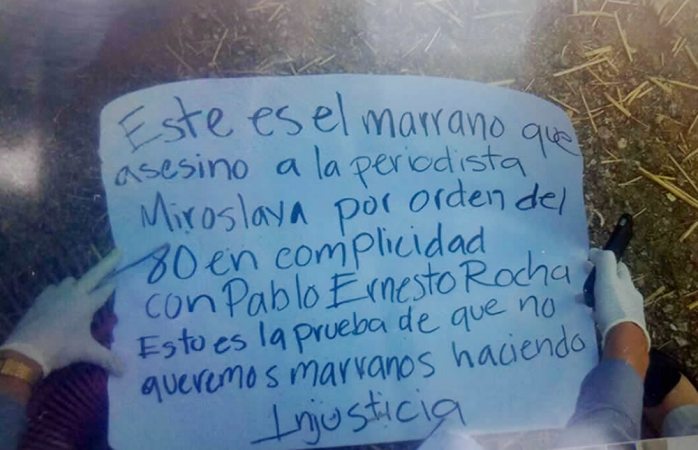
Beside Gabriel Ochoa’s body there was a cardboard sign that blamed him for Miroslava’s murder. The Chihuahua authorities have yet to solve his murder. Source: Colectivo 23 de Marzo
“This is the pig that killed Miroslava the journalist by order of El 80 alongside Pablo Ernesto Rocha. This is the evidence that we don’t like it when pigs commit injustices.”
El 80 is the moniker given to Arturo Quintana, who in March 2017 was the leader of a group called La Linea that rivaled Los Salazar in the northeast of Chihuahua state and worked for the Juarez Cartel. Rocha had been a director of the state police and has been implicated in several abuses and other scandals.
***
Chihuahua media outlets were quick to report on the news and said that Gabriel Ochoa Cárdenas bore resemblance to a police portrait of the man who had killed Miroslava. El Diario, for example, published the drawing of the killer for the first time beside a picture of Ochoa Cárdenas, dead, which should only have been in the possession of the police or the state prosecutor’s office. Even though the intention was to highlight the similarities between the two men, the two did not look alike. The killer was approximately 25 years old, and the former martial arts instructor had already turned 56. In the article, El Diario wrote that Ochoa Cárdenas walked with a limp as did Miroslava’s killer, and speculated that he had grown the mustache over the course of a month because the man in the police portrait did not have one.
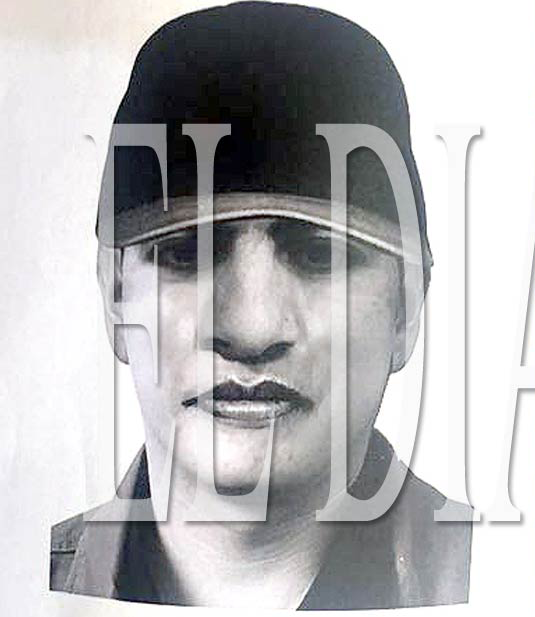
Local media shared what was supposed to be an image showing similarities between Breach’s killer and Ochoa Cárdenas, even though the two differed in age by 30 years. Source: Chihuahua State Prosecutor General of Justice
Our team was able to ascertain, thanks to the help of neighbours, that El Profe was a hermit who spoke little, spent hours sitting on a bench, and had difficulty walking. Years earlier, he had taught karate and had police officers among his students. A local resident said that “he wrote all of his students’ names in a notebook”. The owner of a local store said that whenever she feared that she was about to be robbed, she called for El Profe so that he would come and scare away the troublemakers.
He lived off what his brother sent him and looked after chickens that he kept in a small plot across the street from his home, which is where he was killed.
A former karate student who asked to not be identified was likely the third person to arrive on the scene after hearing the shooting. What he saw did not coincide with the images that they later saw in the news. “I saw a pistol [beside his body] and that was the first thing that caught my attention, because he did not use weapons,” the witness in an interview one year later. “I heard [the police] talking about the pistol being one colour, but when the pictures came out in the newspaper it was another colour. I don’t know when they switched the pistol,” he added. For someone who did not know much about weapons, the difference must have been obvious.
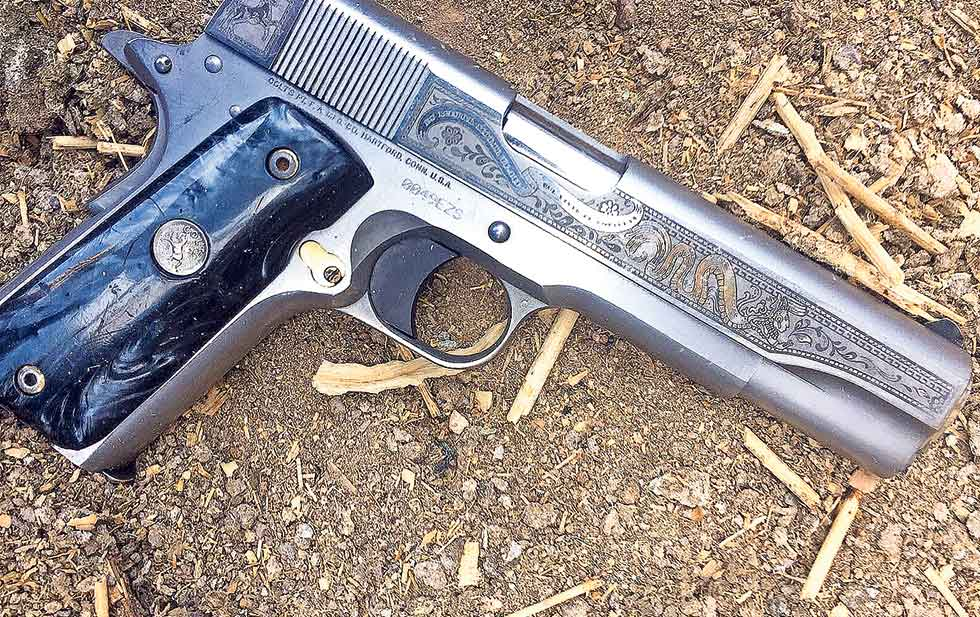
Gabriel Ochoa’s killers left beside his body a collector’s weapon. The testimonies of the individuals who found his body do not appear to make reference to the impressive pistol. Source: El Diario de Chihuahua
The government of former president Enrique Peña Nieto once called Arturo Quintana, or El 80, “the biggest source of violence” in Chihuahua. El 80 allegedly signed the message that was left near Miroslava’s body: ” This is what will happen to anyone with a loose tongue and who is close to the governor and I’m coming for you Gov. From: El 80”. Quintana is currently imprisoned in Altiplano, and while he has been accused by the Drug Enforcement Administration (DEA) of being the leader of the New Juarez Cartel and of drug trafficking, he has not been charged in Miroslava’s killing.
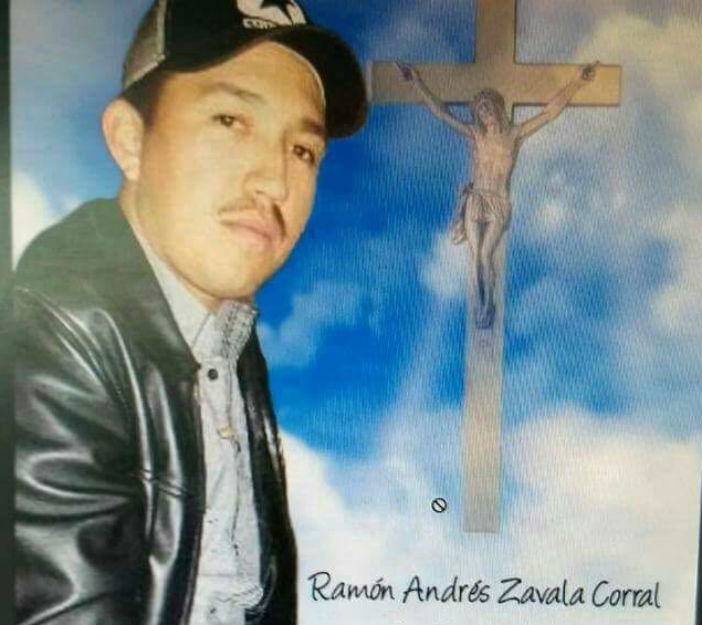
Andrés Zabala Corral was accused of murdering Miroslava Breach. He was killed on December 19 2017. Source: El Heraldo de Chihuahua
Miroslava’s work frustrated the mayoral candidacy of Silvia Mariscal Estrada, El 80’s mother-in-law, for the Bachíniva municipality. The evidence continues to point to Chínipas and to the other criminal group of Los Salazar, who also featured in Miroslava’s \work. Her texts accused them of controlling the local administration, the police force, public works and lands, besides causing violence. After publishing one of her articles in March 2016, Juan Salazar Ochoa was stripped of the candidacy. Martin Ramirez Medina, whom Miroslava accused in November 2016 and February 20, 2017 of working for his drug-trafficking relatives, was the chief of police until January 2018.
The Alleged Hitman
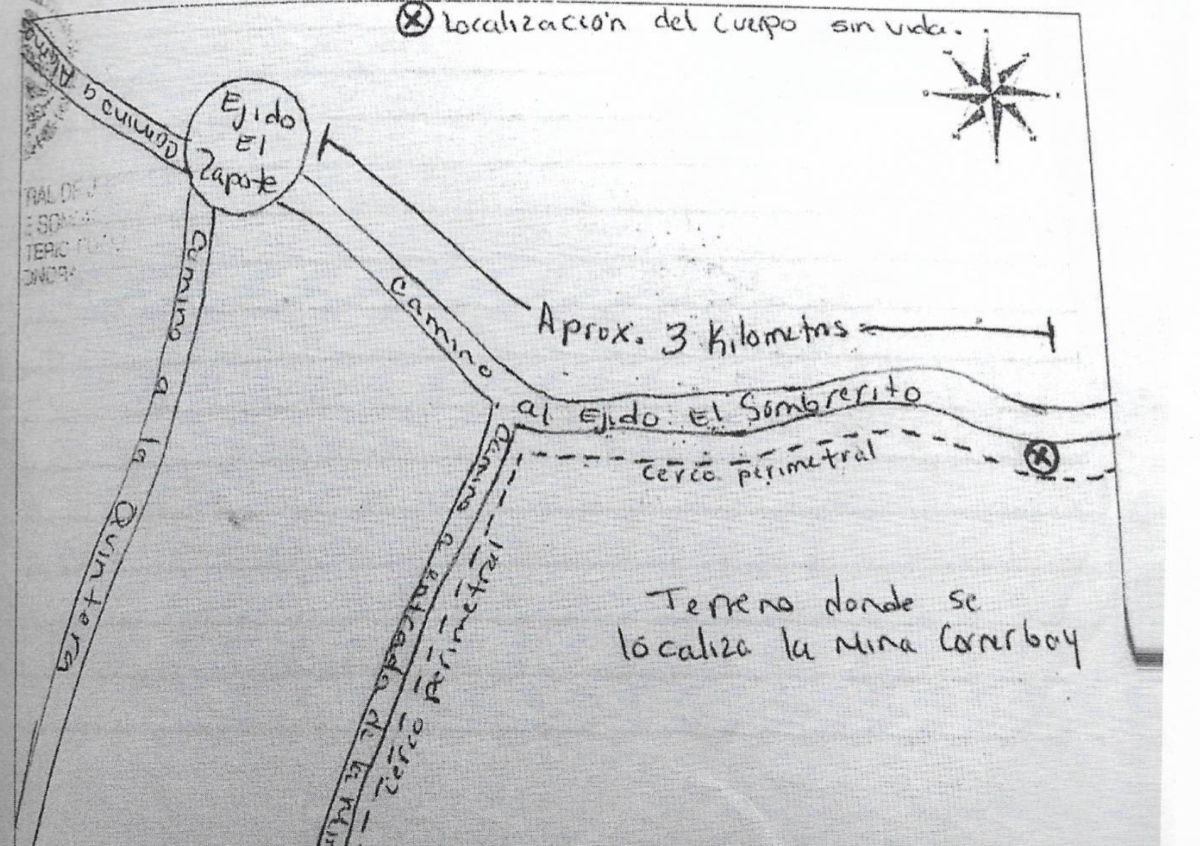
The investigation into the murder of Zabala Corral did not yield results. His body was found in ditch in the Álamos municipality in Sonora state. He had been shot in the heart. Source: Chihuahua State Prosecutor General of Justice
A hand-written police report dated December 20, 2017 notes that a man between the ages of 25 and 30 was found dead of a bullet that entered through his back and exited his chest, in a desolate road some three kilometers in El Zapote, in the Álamos municipality of Sonora state. The deceased was 173 centimeters tall, had lightly tanned skin, short hair, and had a narrow, large nose. What really distinguished him were his tattoos: one was a skull, and another were the names of his two sons. This is how he was identified as Ramón Andrés Zabala Corral, the man whom the Chihuahua state prosecutors claim shot Miroslava eight times, the same that was captured by security cameras limping, carrying a white object under his arm. That white object was the sign that was left near Miroslava’s body.
Little is known of Zabala. He was born, lived and died in Álamos, in southern Sonora, approximately 120 kilometers from Chínipas. The area is in a drug and human trafficking corridor controlled by Los Salazar. Sonora state is governed by the PRI, while Chihuahua is governed by the PAN. South Chihuahua and south Sonora are under the control of Los Salazar, and Álamos is one of their bastions. That is where, in 2016, Adan Salazar Ramirez, known as El Indio and son of Don Adan, was murdered. His body was found in the Navojoa city of Sonora.
According to de Mauleon’s El Universal article, the federal police knew that Zabala was speaking on the phone with a romantic interest during the nine months in which he was on the run, and that he narrowly escaped capture once after being tipped off.
The man seen in CCTV footage shooting Miroslava limps. However, individuals interviewed by the state prosecutor’s office were never asked whether Zabala limped.
No image clearly captured the face of the man who killed Miroslava, but there is a police portrait drawn following the testimony of an anonymous witness to the state prosecutor’s office. This anonymous witness—who lived in Miroslava’s neighbourhood—stated in a second interview in August 21, 2018 to the Federal Prosecutor General’s special office that he had not seen the killer’s face but only his profile. This witness also said that the Public Ministry that had asked her to identify someone they told her was named Ramón.
“I told them once more that I did not know who the persons in the photos they were showing me were. Once again, the man told me ‘Look, the person we are looking for is named Ramón and lives in a small ranch in Sonora. It’s him we’re investigating; he no longer lives in Chihuahua’. And that’s when I asked him: so I highlight his picture? And I made a mark on top of his photo,” the witness said. This declaration can be found in case file number FED/SDHPDSC/UNAI-CHIH/0000214/2017.
There are no images available that allow recognition beyond doubt of Miroslava’s killer. Zabala was linked to the crime because according to the case file his cell phone number appears on the log of calls made by Jaciel Vega Villa from the crime scene and because his phone number, preceded by area code 642 of southern Sonora, matches his Facebook account. This collective could not verify this information on his social media account.
From his Facebook account, the state prosecutor’s office extracted photographs then shown to witnesses who later identified him. Among those who identified him was Rubi, the police officer who sheltered the killers following Miroslava’s murder.
This team identified three Facebook profiles matching Zabala. In the photos of the account named Andrés Vega, a serious, inexpressive man can be seen, often with his father and other times with a younger brother. One of his last messages is a cardboard sign glorifying the work of hitmen. Another photograph shows a black gun. He sometimes “Liked” pictures from some of his sons.
Miroslava’s murder case file does not have clear information on where Zabala stayed. Rubi, the police officer and niece of El Larry, said that both her uncle and the armed stranger with a Sonora accent accompanying him (and whom she recognized in photos) slept in her house from March 23 to Sunday March 26, when he was taken to the airport by a cherry-colored SUV.
In contrast, the driver protected under the moniker Cholugo, said that on the morning of March 23 he took Zabala along with El Larry to the Marrod Hotel, located in the outskirts of the city of Chihuahua, and that he spent four hours with them in room 120.
Eight months later, two employees from the Houston Hotel, whose names were protected, said that they remembered the man in the photograph and that he was the mysterious man who never left room 205 between March 26 and 28. They said they only saw him when he smoked, that he did not allow his room to be cleaned, and that he was always wearing clothes identical to those seen on the CCTV footage of Miroslava’s killer.
It is not known how or when he fled to the Sierra, nor what he did during the nine months he remained a fugitive before being found dead in Álamos, in southern Sonora.
After Zabala’s murder, relatives told the state prosecutor’s office that the deceased had been a mysterious and silent man, almost surly, who disappeared for weeks, did not liked to be asked about his job and once asked them not to pay attention to town gossip saying he was “following the wrong footsteps”. A woman he lived with spoke about his long absences, his aversion to social media networks, his preference for communication via messages or phone calls, and his constant changes of cellphone numbers on account of losing them.
Nearly a month and a half after Zabala’s murder, on February 9, 2018, our team asked the prosecutor for the central zone, Carlos Mario Jiménez, why they had not captured him if they already knew of his whereabouts in April, when governor Corral announced that they had identified all of the people involved in Miroslava’s murder. The prosecutor replied: “We decided to not ask [Sonora] for help because those people [Los Salazar] have been there for many years, and things wouldn’t be safe (…) That was a strategic decision, with all due respect to Sonora”.
***
Zabala’s murder case file is about 30 pages long. It contains a picture that was made at the request of his relatives by a funeral home, which shows him alongside a crucifix. This image appeared in media reports of his killing. And, while experts from Chihuahua traveled to Álamos to examine Zabala’s body and interview his relatives and witnesses, the case file only contains evidence of one concrete action. On March 20, 2018, three months after the murder, the coordinator of the state prosecutor’s office specialized homicide squad asked the forensic unit for a genetic profile of “Zavala Corral” in order to compare it to evidence from the Miroslava case. This was done “to gain knowledge about the truth of the circumstances in which [Miroslava] lost her life”. A month later, federal authorities took over Miroslava’s case from the state of Chihuahua after requests from Breach’s family and organizations defending freedom of expression. There is no documentary evidence suggesting that this request for Zabala’s DNA was ever carried out.
The investigations into these five deaths inexplicably show no advances despite the fact that they could illuminate key aspects of the crime against a courageous journalist whose work in the last months of her life focused on documenting and denouncing the displacements, the murders, and the abuses suffered by the people of the Sierra. She placed special emphasis on the expansion of Los Salazar in Chínipas, her hometown, and the tight and long connection that the family had with the politics of Sonora and Chihuahua. Miroslava told those who threatened her that she would not remain silent, because silence was collusion.
